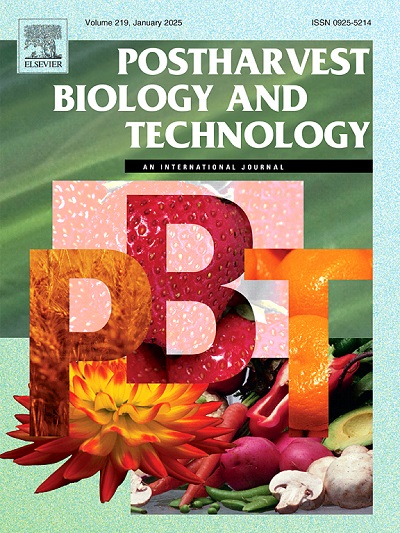Revealing regulatory mechanism of AdMYB52 transcription factor in callusing-suberin biosynthesis in kiwifruit
IF 6.4
1区 农林科学
Q1 AGRONOMY
引用次数: 0
Abstract
Callusing-suberin in kiwifruit is induced by mechanical friction during harvesting and transportation. This research identified AdMYB52 transcription factor (TF) as a regulator of callusing-suberin biosynthesis. Transient overexpression of AdMYB52 in kiwifruit callus increased suberin accumulation, while transient gene silencing resulted in decreased suberin levels. Using DNA affinity purification sequencing (DAP-seq), 3273 peak-related genes and 123 significantly enriched motifs were identified as potential binding sites of AdMYB52. Further combining analysis of DAP-seq and RNA sequencing (RNA-seq) identified 343 overlapping genes as potential targets of AdMYB52. Gene ontology (GO) analysis revealed that these target genes are enriched in processes related to fatty acid metabolism, oxidoreductase activity, cell cortex formation, and phenylalanine catabolic process, all of which are associated with suberin synthesis. Electrophoretic mobility shift assay (EMSA) verified AdMYB52 binding to six motifs in the promoters of target genes (KCS, ABCB1, LPS, CYP724B1, FAR, LACS) involved in suberin biosynthesis. The analysis of qRT-PCR further confirmed the regulation of these target genes by AdMYB52. This study elucidates a possible regulatory mechanism for callusing-suberin biosynthesis involving AdMYB52 TF.
求助全文
约1分钟内获得全文
求助全文
来源期刊

Postharvest Biology and Technology
农林科学-农艺学
CiteScore
12.00
自引率
11.40%
发文量
309
审稿时长
38 days
期刊介绍:
The journal is devoted exclusively to the publication of original papers, review articles and frontiers articles on biological and technological postharvest research. This includes the areas of postharvest storage, treatments and underpinning mechanisms, quality evaluation, packaging, handling and distribution of fresh horticultural crops including fruit, vegetables, flowers and nuts, but excluding grains, seeds and forages.
Papers reporting novel insights from fundamental and interdisciplinary research will be particularly encouraged. These disciplines include systems biology, bioinformatics, entomology, plant physiology, plant pathology, (bio)chemistry, engineering, modelling, and technologies for nondestructive testing.
Manuscripts on fresh food crops that will be further processed after postharvest storage, or on food processes beyond refrigeration, packaging and minimal processing will not be considered.
 求助内容:
求助内容: 应助结果提醒方式:
应助结果提醒方式:


